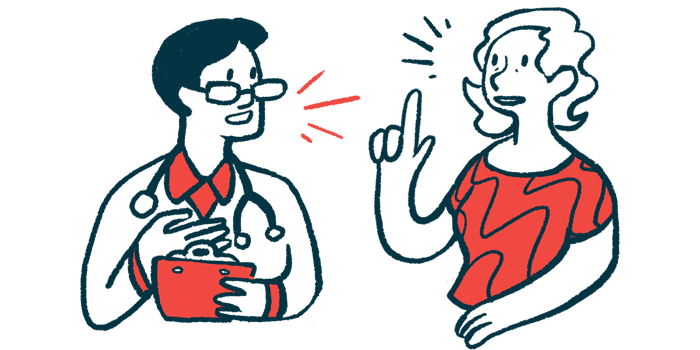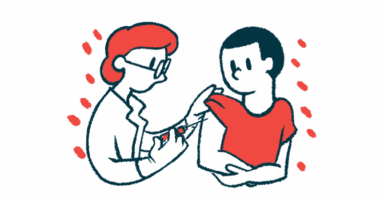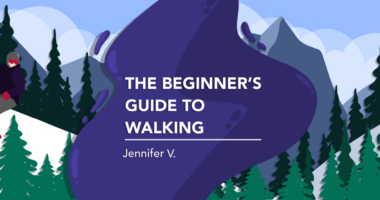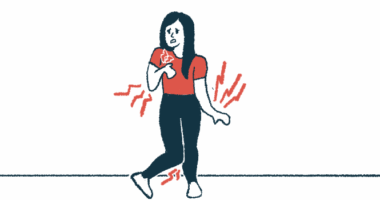Late-onset NMOSD linked to worse recovery, faster disability
Patients with early-onset disease fared better in German study

People who develop neuromyelitis optica spectrum disorder (NMOSD) at 50 years or older are significantly more likely to experience worse recovery from relapses and faster disability progression than those with early-onset disease, a study in Germany showed.
These increased risks were seen despite comparable relapse rates, more intensive relapse treatment, and an earlier start to long-term treatment.
“Rapid disability progression due to worse attack outcomes despite aggressive treatment of acute attacks and the early initiation of long-term immunotherapies highlights the need for novel therapeutic strategies to manage acute attacks … in LO-NMOSD [late-onset NMOSD],” researchers wrote.
The study, “Worse recovery from acute attacks and faster disability accumulation highlights the unmet need for improved treatment in patients with late-onset neuromyelitis optica spectrum disorders (COPTER-LO study),” was published in Frontiers in Immunology.
Disease relapses can lead to neurological damage
NMOSD is a rare autoimmune condition characterized by damaging inflammation in the spinal cord (transverse myelitis) and/or the eye nerves (optic neuritis), which can lead to muscle weakness, vision problems, and other symptoms.
Repeated inflammatory attacks, or disease relapses, can lead to cumulative neurological damage, resulting in permanent disability if untreated.
Most NMOSD cases are caused by the abnormal production of self-reactive antibodies that target the AQP4 protein present at the surface of nerve cell-supporting cells.
The condition can be classified as early-onset when symptoms start before age 50, and as late-onset when symptoms develop at 50 years or older. Increasing evidence suggests late-onset NMOSD is linked to worse outcomes, including higher rates of motor disability, poorer visual outcomes, and increased risk of disease-related mortality.
Previous studies have often been limited by small sample sizes, predominance of Asian patient populations, or inclusion of people with the NMOSD-related condition myelin oligodendrocyte glycoprotein antibody-associated disease (MOGAD). This has prompted “the need for confirmation in larger … studies with a focus on older patients,” the researchers wrote.
“The underlying factors driving these poor outcomes remain unclear,” the researchers added. “Consequently, the targets for improving outcomes in these patients are still unidentified.”
Late-onset patients had worse recovery from relapses
To address this knowledge gap, a team of researchers analyzed clinical data from 446 NMOSD patients seen at 35 German academic centers, using the NEMOS registry, a nationwide database dedicated to NMOSD. People with MOGAD were excluded.
About a third of the patients (34.3%) had late-onset disease, with a mean onset age of 59 years, while the remaining 65.7% had early-onset, with a median age at onset of 34 years.
Transverse myelitis was more commonly the initial disease manifestation in the late-onset group than in the early-onset group (58.4% vs. 37.9%). The early-onset group was most commonly affected by optic neuritis at onset (42.6% vs. 27.4% for the late-onset group). These differences were statistically significant.
While the frequency of relapses per year was similar between the two groups, late-onset NMOSD patients showed worse recovery from these relapses.
Among 353 NMOSD patients with remission data for 1,454 attacks, 15.6% of late-onset patients achieved complete remission, compared with 27.4% of early-onset patients. The late-onset group was also about twice as likely not to recover at all (9.8% vs. 4.7%),
When considering the first relapse among 295 patients with available data, complete remission was reached by 13.1% of late-onset NMOSD patients and 38.3% of the early-onset group.
Overall, those with late-onset disease showed a significantly lower chance of full recovery, by 56% for all attacks and by 76% for the first attack.
Similar findings were seen according to type of attack (optic neuritis or transverse myelitis).
Late-onset NMOSD patients reached disability milestones two to three times faster than early-onset patients. This was reflected by a significantly higher risk of moderate disability (by 2.6 times), needing a walking aid (by threefold), and being restricted to a bed/wheelchair (by 3.5 times).
Outcomes worse despite more intensive treatment
These worse outcomes occurred despite more intensive treatment of acute attacks, including significantly higher doses of into-the-vein corticosteroids and more frequent combination with apheresis therapy. Corticosteroids are commonly used to reduce inflammation, while apheresis therapy is used to remove self-reactive antibodies from the bloodstream.
A diminished anti-inflammatory response to steroids or age-related declines in repair mechanisms in older individuals may underlie the poorer outcomes observed in late-onset NMOSD, the researchers suggested.
Those with late-onset NMOSD also started long-term immunotherapy, to prevent relapses and slow or halt disability, faster after disease onset relative to those with early-onset disease.
These findings suggest “disease progression in LO-NMOSD patients is mainly driven by suboptimal recovery from attacks, rather than delay in diagnosis or long-term immunotherapy,” the researchers wrote. “This highlights the need for new acute attack strategies in LO-NMOSD patients to optimize attack outcome.”
These may include therapies that more effectively remove harmful antibodies from the blood, reduce damaging inflammation, or calm the immune response, according to the researchers. Developing treatments that support the brain and spinal cord in healing and repairing damaged tissue could also be key to preventing long-term disability in this vulnerable group.








